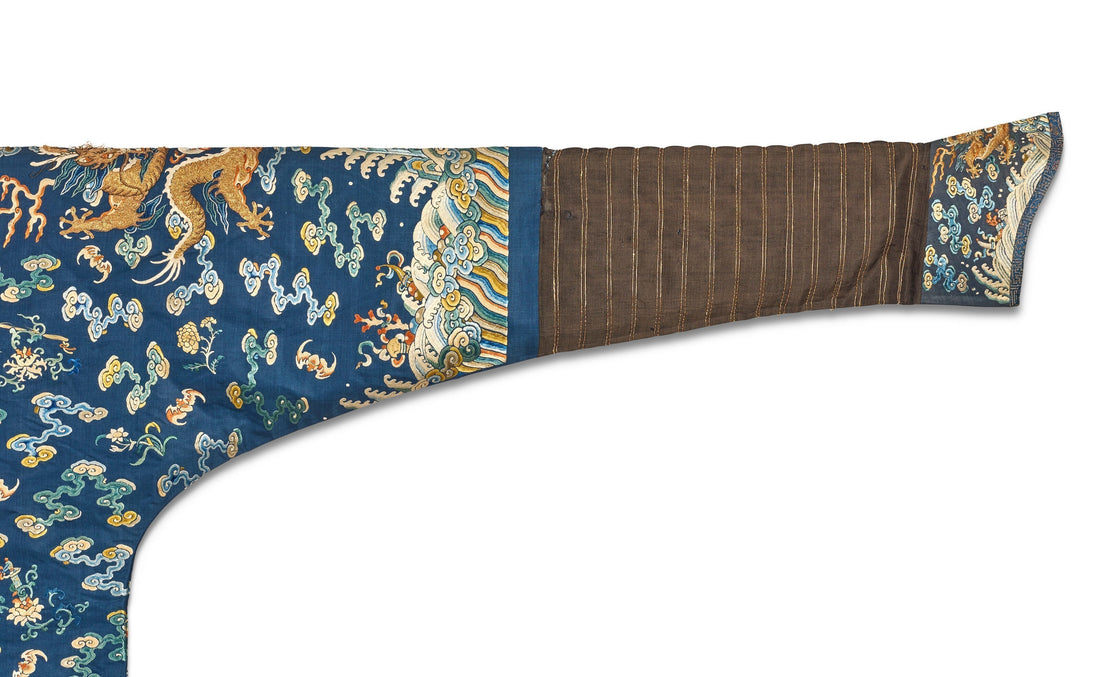
Horsehoof Sleeves in Qing Dynasty Attire: Function, Ritual, and Symbolism
Share
The "Horsehoof Sleeve" refers to a semicircular cuff sewn onto the narrow sleeve ends of Qing dynasty garments. In Manchu, it is called “waha”. This is a distinctive subtype of the "arrow sleeve" style, characterized by a slim sleeve body joined to a downward-extending semicircular cuff, which can be flipped up or down.
Its design originated from the cold climate and equestrian-archery lifestyle of the Manchu people in Northeast China. In daily use, the horsehoof sleeve was typically folded upward, allowing the hand to extend freely from the sleeve tube—facilitating archery, weapon handling, and horseback riding. When flipped down, it covered the back of the hand for warmth and protection against bowstrings or blades.
After the Tifayifu (tonsure and costume reform), the horsehoof sleeve became a standard feature in formal attire such as chaofu (court dress), jifu (auspicious dress), and changfu (everyday official wear). Following the Qing conquest of China, officials were required to lower their sleeve cuffs (known as “fang waha”) before imperial audiences or ritual kneeling, as a gesture of reverence and submission.
More than a sartorial detail, the horsehoof sleeve embodied the ethnic memory of the Manchu people—reminding rulers and nobles that they were a nation that had "won the empire on horseback." It fused practicality, ritual, and symbolism, becoming an indispensable element of Qing dynasty dress codes.